
Curating Your Home's Art Collection: A Personal & Practical Journey
Transform your house into a soulful home. This guide offers personal insights and practical steps for curating art that speaks to your soul, from discovering your unique style to ethical acquisition, display, and long-term care.
Curating Your Home's Art Collection: A Personal & Practical Journey to a Meaningful Space
I’ve always felt that choosing art for your home is so much more than just "decorating." That term, to me, undersells the profound, personal act of selecting pieces that truly resonate. It's not about simply filling an empty wall or, as tempting as it can be, just matching the sofa (and yes, I’ve been guilty of that too, probably more times than I care to admit!). For me, it's about curating—a powerful word often reserved for museums, yet it perfectly captures the thoughtful, intentional process of building a collection that speaks to your soul, tells your story, and transforms your house into a genuine home. This journey, undoubtedly, can sometimes feel like navigating a maze blindfolded, much like trying to find that one piece that speaks to you when you feel you've seen it all. I remember years ago staring at a blank wall, utterly bewildered, convinced I needed the 'perfect' piece to tie a room together. But it's also an incredibly rewarding quest.
My hope is that by the end of this guide, you’ll feel empowered to make your walls truly sing with your unique narrative. We’ll embark on an adventure to define what home curation truly means, discover your unique artistic voice, explore the fascinating world of different mediums, navigate the practicalities of acquisition and display, and finally, learn how to lovingly care for your cherished pieces. What I eventually learned, and what I want to share with you, is that the goal isn't perfection; it’s personality. And that, I believe, is the true beauty of it all. Your art is a direct reflection of you—your quirks, your memories, your quiet aspirations. It's less about what's 'right' and more about what genuinely resonates with your essence. Imagine building a space that whispers your name, rather than echoing generic trends or dictating a style you don't truly love. Your art, after all, is a part of your daily conversation with your home, and like any good conversation, it evolves as you do.
Defining Home Curation: More Than Just Decorating
So, if it's not just decorating, what exactly is home curation? When I talk about “curating for your home,” I'm certainly not suggesting you need an art history degree or a limitless budget. Quite the contrary, actually! It's about being profoundly deliberate. It’s about crafting an environment where every piece you choose genuinely resonates, sparking joy, a moment of reflection, or a gentle memory each time you pass by. For me, it’s about establishing a rich, unspoken dialogue between your walls, your furniture, and your very essence.
Let's bring this concept to life with an example: Imagine a striking abstract piece not merely hanging, but actively conversing with the soft, inviting textures of your plush velvet sofa. Or perhaps a bold geometric artwork with sharp, decisive lines interacting with the sleek, modern aesthetic of a leather armchair. This dynamic interplay elevates the entire space, giving it a life and energy of its own. It's like the vibrant blues of a calming abstract painting reflecting the serenity of your reading nook, or the bold lines of a piece adding dynamism to a quiet corner. This dialogue, by the way, extends far beyond aesthetics; it's deeply emotional and personal, a quiet affirmation from your home, reflecting your essence back to you. Perhaps it's the serene contemplation evoked by a surrealist piece, pulling you into a dreamscape, or the vibrant energy of a folk art painting that transports you to distant cultures. Each genre, each brushstroke, holds the potential for a unique exchange, a tangible echo of your inner world. I remember once placing a small, energetic abstract painting next to an antique armchair, and it was as if the colors and the worn velvet suddenly found a new rhythm, transforming a quiet corner into a vibrant spot for reading and contemplation.

Art's Profound Influence on Your Sanctuary and Well-being
We often perceive art solely through a visual lens, but its impact runs so much deeper, touching our well-being and shaping our daily experience. The right piece has an uncanny ability to subtly shift a room's mood, transforming a functional office into a hub of creativity or a bustling living area into a haven of calm. I’ve personally found that surrounding myself with art that truly moves me isn't just about making a space look good; it actively fosters a sense of tranquility, reduces stress, and continuously sparks new ideas—a concept explored in fields like biophilic design, which connects us to nature. Beyond this, consider the profound effects of color psychology in art; how a calming blue can lower blood pressure, or an energizing red can stimulate conversation and focus. Art can also serve as a powerful trigger for memory recall, connecting us to past experiences or places, thereby enriching our emotional landscape daily. Studies in cognitive science even suggest that engaging with art can improve problem-solving skills and enhance emotional intelligence. It's a quiet, ongoing investment—not just financially (though art can appreciate!), but an investment in your personal sanctuary and daily joy. It’s how you stamp your unique identity onto your living space, making it undeniably yours, and creating a profound sense of place and belonging. Engaging with art, in its purest form, can even offer a quiet, therapeutic benefit, allowing moments of reflection and escape from the everyday.
Consider how a piece evoking the fleeting beauty of nature, much like an Impressionist painting, can infuse a room with tranquility. Or how a bold abstract statement piece from an emerging artist can reflect your personal growth and evolving narrative—a true artistic journey that parallels your own. Art impacts us on a primal level; the strategic use of color harmonies or engaging textures can even influence cognitive function and emotional states. It speaks an unspoken language, communicating comfort, challenge, or serenity directly to your being.
Connecting Through Your Walls: Art as a Conversation Starter and Empathy Builder
Beyond personal reflection, art possesses a magical way of opening doors—both within your mind and between people. It’s like a silent, intriguing host at your dinner party, or a curious guest in your living room. The pieces you choose can spark vibrant discussions among friends and family, inviting them to share their own interpretations, memories, or even disagreements. I’ve seen a single abstract painting become the unexpected focal point of an entire evening, prompting stories and laughter long after the appetizers were gone. This encourages a deeper engagement with your space and the stories it holds, transforming passive viewing into active connection. It's a subtle yet powerful way to share a piece of your soul without saying a word, allowing others a glimpse into your inner world and perhaps, even prompting them to reflect on their own. Furthermore, by exposing us to different cultures, perspectives, and emotional expressions, art can significantly foster empathy, broadening our understanding of the human experience. Once we fully appreciate art’s power to connect us on so many levels, the truly exciting next step is discovering what deeply speaks to you.
Finding Your Artistic North Star: Beyond 'Matches the Sofa'
So, with a clear understanding of what home curation entails, the next crucial step is embarking on the exhilarating journey of discovering what truly speaks to you. Where do you even begin this grand adventure? My first piece of advice is always to turn inward. Seriously, try to set aside trends, what your friends own, and what those glossy magazines dictate. What genuinely moves you? What colors ignite your spirit? Which themes or subjects consistently capture your eye?
1. Turning Inward: Identifying Your Preferences
Perhaps you're drawn to the vibrant, almost spiritual energy of abstract art, with its freedom of expression. Think of the bold geometric forms reminiscent of Kandinsky's search for inner sound and spiritual expression—a profound inquiry into deeper truths, reflecting a philosophical quest for order amidst chaos. For me, Kandinsky’s vibrant chaos often feels like a mirror to the beautiful messiness of life, making it incredibly relatable. Or perhaps Mondrian's pursuit of universal harmony through primary colors and straight lines, a concept I personally find incredibly soothing in our often chaotic world; it's like a visual anchor, grounding me. These artists weren't just creating pretty pictures; they were exploring fundamental questions about existence through form and color. But the art world is vast and beautiful, extending far beyond abstraction. Perhaps you find solace in the dramatic light and shadow of a Renaissance portrait, the ephemeral beauty of a Monet Impressionist landscape, or the raw emotion of a contemporary realist piece. Could it be the dreamlike narratives of Surrealism, challenging the everyday, or the raw, emotive power of Abstract Expressionism, speaking directly from the artist's subconscious? Even the anti-art rebellion of Dadaism can spark an intriguing dialogue in a space, questioning conventional beauty. Or maybe you find solace in the calm serenity of landscapes, much like Turner’s atmospheric seascapes evoke deep emotion. Could it be the evocative storytelling of figurative art, or the rich narratives woven through Pop Art, Expressionism, or Minimalism? Consider also the fascinating psychology of color—how a splash of deep blue can offer calm, fostering a sense of peace and contemplation, or a fiery red can ignite passion and energy, stimulating conversation. Each hue, each shade, subtly influences our emotional state and the atmosphere of a room.
When I first started collecting, I was fixated on finding that elusive "perfect" piece to tie a room together. The result? Something beautiful, yes, but it felt… impersonal. It didn’t feel mine. That's when I had my revelation: the true goal isn't perfection, it's personality. I remember a small, almost insignificant-looking painting I picked up years ago. It didn't "match" anything, and its colors were a little muddy. But there was something about the raw energy of the brushstrokes that just spoke to me. It defied my initial hunt for perfection and became a cherished reminder that sometimes, the most resonant pieces are the ones that challenge your preconceptions. So, truly dive into what genuinely excites you. If you're feeling stuck, here are a few questions I often ask myself to help clarify my artistic vision:
- Does this piece evoke a specific memory or emotion? What story, exactly, is it trying to tell me, or what memory is it unearthing?
- Does it challenge me in a positive way, prompting thought or curiosity? Does it make me want to learn more, or see things from a different perspective?
- Could I happily live with this piece every day? Will it continue to surprise and delight me, aging gracefully alongside my home and myself?
2. Exploring Artistic Movements & Resources and Finding Your Collecting Focus
To research artists and movements, start by exploring online galleries and art publications, visiting local museums, or simply scrolling through images of art that catch your eye. You might even want to visit a physical gallery, even if it's just for window shopping! Begin to cultivate a mental (or actual) mood board of what you love. You'll soon notice patterns emerging, and those patterns are your artistic north star. And if you ever feel a little lost, remember that even a quick browse through what's available to buy can sometimes spark an unexpected connection, much like bumping into an old friend in an unfamiliar city. Many collectors find joy in pursuing specific themes—perhaps abstract cityscapes or portraits of women—or in collecting works by a particular artist, following their unique artistic journey. This focused approach can build a cohesive collection without being overly restrictive. Engaging with artist interviews, documentaries, and art history resources can also deepen your understanding and refine your taste, transforming passive appreciation into active learning.
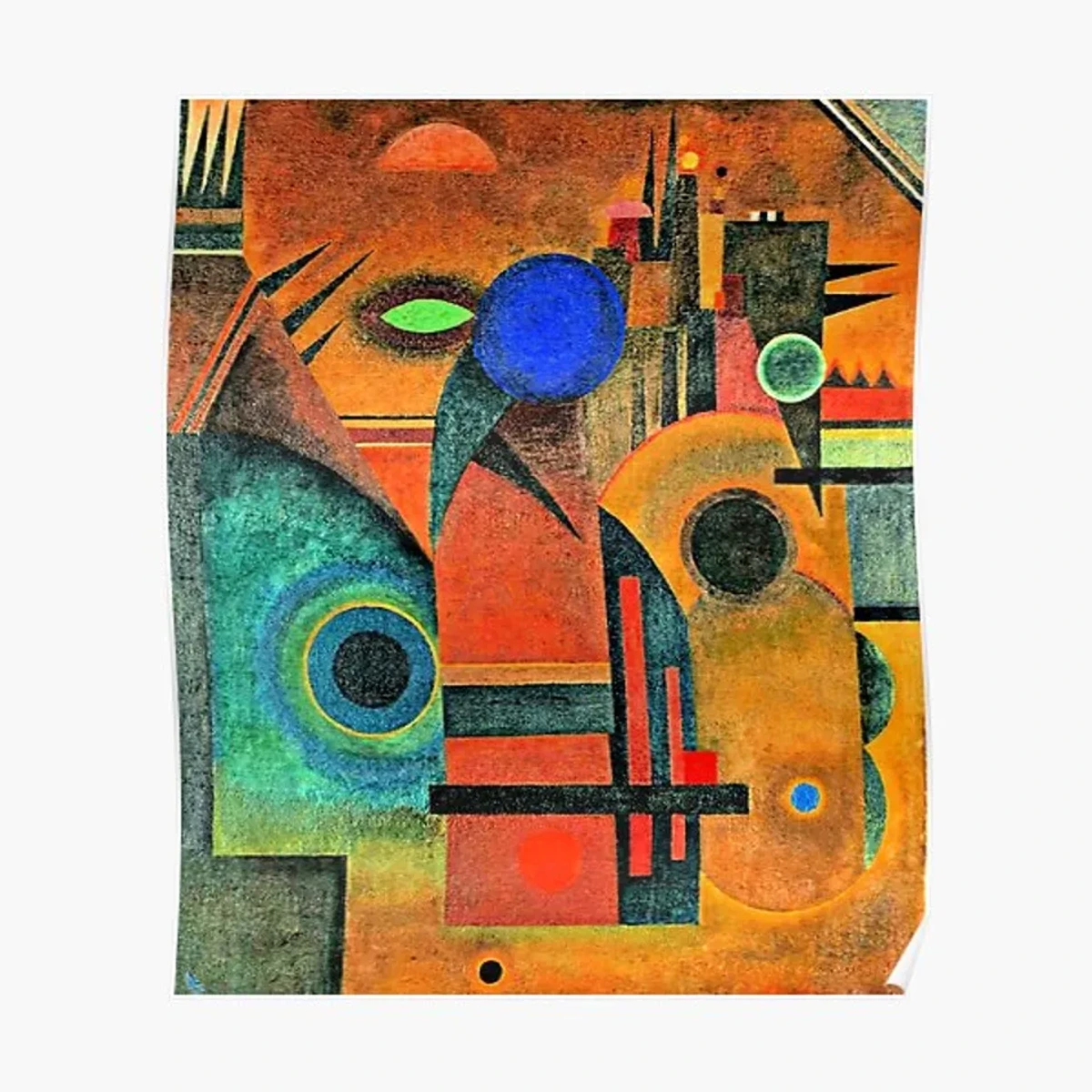
Exploring the Canvas Beyond Paint: Mediums and Their Magic
Art certainly isn't limited to paint on canvas. The medium itself is a powerful element, playing a huge role in how a piece interacts with your home. Think of it like choosing the right instrument for a song; each brings a unique quality, impacting not just what you see, but also what you feel, and even how light behaves in a room. When considering mediums, it’s also worth a brief thought about their environmental impact; many artists are now prioritizing sustainable materials, adding another layer of appreciation to their work and reflecting a conscious artist's intent.
- Paintings (Oil, Acrylic, Watercolor): Oil paintings often offer rich textures and deep colors, exuding a sense of tradition and gravitas. Acrylics, on the other hand, can be vibrant and contemporary, while watercolors often lend a delicate, ethereal feel. The physicality of the paint can add another layer of depth to your space; consider how texture in a thick oil painting draws the eye differently than the smooth surface of a watercolor.
- Sculptures: These three-dimensional works command space, interacting with light and shadow in a truly unique way. A minimalist metal sculpture might introduce an industrial edge, while a ceramic piece could offer organic warmth. They transform a room by creating undeniable focal points and encouraging movement around them, defining form and space in a tangible, compelling manner. Sculptures can also be tactile, inviting a different kind of engagement, though always with care!
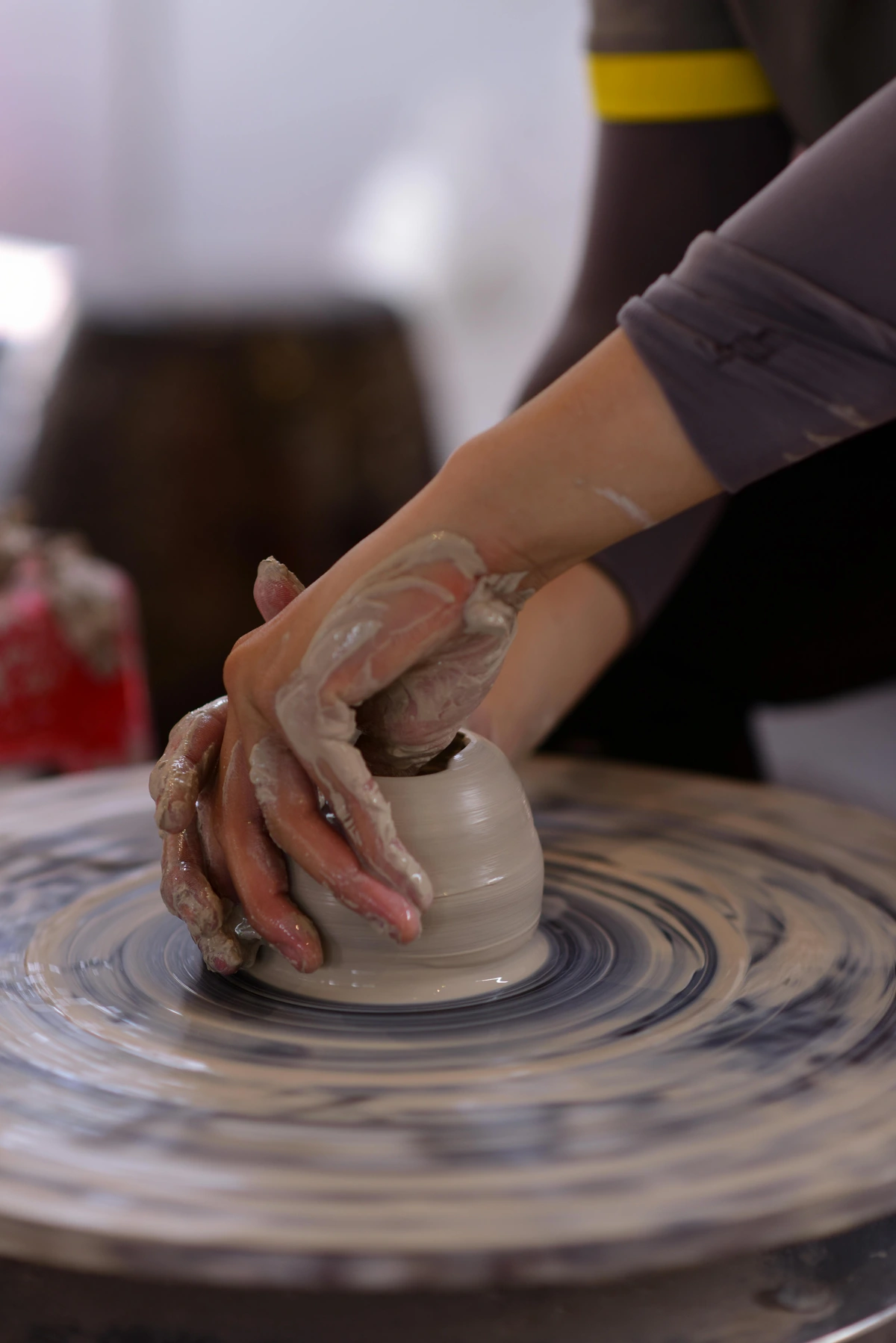
- Photography: From crisp black and white landscapes to vivid abstract compositions, photography offers a window to another world or a unique perspective on reality. Its often-smooth surface beautifully contrasts with textured walls or furniture, adding a sleek, modern touch. It can be surprisingly powerful in crafting compelling visual stories.
- Prints (Limited vs. Open Edition, Types): Please, don't overlook prints! They offer a fantastic and often accessible entry point into collecting. Limited edition prints are produced in a finite number, usually signed and numbered by the artist, which often enhances their collectibility and value, indicating a direct connection to the artist's specific creative intention for that run. Artist's Proofs (APs) are typically a small portion of the edition (often 10-15%) reserved by the artist for their own use, sometimes bearing slight variations or early states, and can hold special value due to their direct connection to the artist's process. Publisher's Proofs (PPs) are similar but reserved for the publisher. Open edition prints are produced indefinitely, offering a more accessible and often more affordable way to own a piece you love, without the same emphasis on scarcity or unique artist signature. Beyond these, understanding printmaking techniques like giclée, lithography, and screen printing can help you appreciate the quality and artistry involved. A high-quality giclée print, for instance, can bring the vibrancy of an original painting to your wall with stunning clarity and color accuracy, ensuring the artist's intent is perfectly represented. The key takeaway? Prints offer a democratic way to bring significant art into your home, blending accessibility with genuine artistic merit.
- Mixed Media: These captivating pieces often combine various materials, creating unexpected textures and intricate narratives. They are perfect for adding an element of surprise and complexity, inviting closer inspection and deeper thought. I’ve seen some truly mesmerizing works that incorporate found objects, stitching, and paint—each component telling a story within a story, often playing with composition in fascinating ways and powerfully reflecting a unique artist's intent in combining diverse elements, layering meaning and texture.
- Textile Art (Tapestries, Woven Pieces): Often overlooked, textile art can introduce incredible warmth, intricate patterns, and soft textures, acting as a sound dampener and adding a rich, handcrafted feel. From modern abstract wall hangings to traditional tapestries, they bring a unique dimensional quality and can tell powerful cultural narratives.
- Digital & Generative Art: As technology evolves, so does art. Digital art refers to works created using digital technology, while generative art involves algorithms or autonomous systems to produce imagery. These mediums often present unique display opportunities (e.g., screens, projections) and offer a distinctly contemporary aesthetic, pushing the boundaries of what art can be in your home.
Choosing a medium is another layer of expressing your personality, so don't hesitate to mix and match. A bold abstract painting can look absolutely incredible positioned next to a delicate metal sculpture, creating a dynamic and engaging visual tension. When planning, always remember that the longevity of your chosen medium also relies heavily on archival framing, which uses acid-free materials and UV-protective glass to shield your artwork from deterioration over time—a small detail that makes a monumental difference in preserving your cherished pieces for generations.
Cultivating Your Collector's Voice: An Evolving Dialogue
This entire journey of discovery is all about developing your own discerning eye, learning to trust your instincts, and, crucially, not being swayed by fleeting trends or external validation. Your collection is profoundly personal; it truly is a living autobiography. And it’s perfectly okay—in fact, it’s wonderful—if your taste evolves over time, or if your collection doesn’t neatly fit into a single, prescribed style category. The true beauty lies in the authenticity of your choices. For instance, you might be drawn to the structured chaos of a Kandinsky one day, and the serene minimalism of a Mondrian the next. Both are abstract, yet they speak distinctly different artistic languages. What unites them in your home is your unique appreciation and perspective. It’s fascinating how Mondrian, with his strict grids, aimed for universal harmony, a concept I personally find incredibly soothing in our often chaotic world, while Kandinsky explored spiritual expression through vibrant, free-flowing forms—both profound, both abstract, and both capable of sparking joy in different moods. This, my friend, is your authentic voice speaking through your walls, a quiet rebellion against the generic. Embrace the quirks, the unexpected connections, and especially the pieces that simply make you smile because they exist in your space. Don't be afraid of making a "mistake"; every choice, even those you might later reconsider, sharpens your eye and refines your unique collector's voice. Remember, the thrill of discovery and the ongoing joy of learning about your pieces and their creators are integral to this journey.
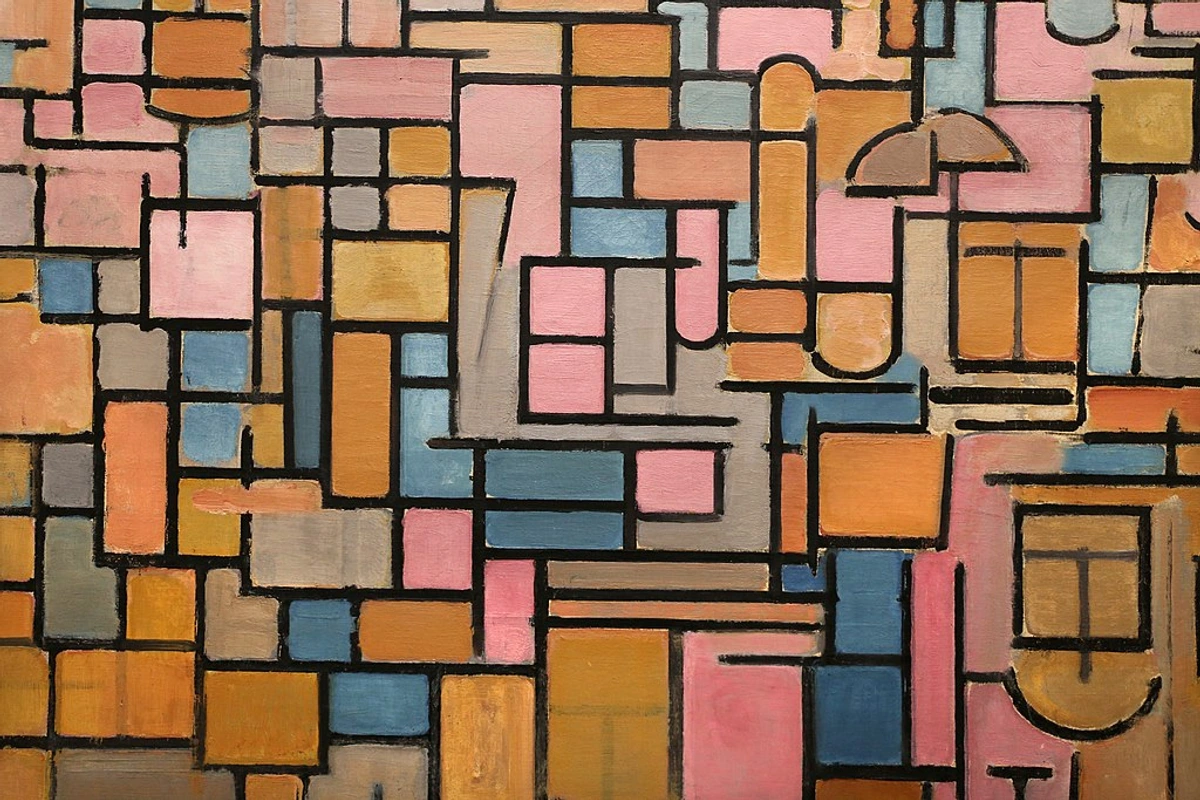
The Practicalities: Bringing Your Vision to Life
Alright, let's get down to the tangible aspects. Now that you're connecting with your artistic soul, you're probably wondering about the nuts and bolts of bringing it all home. The good news is, curating a meaningful collection doesn't have to mean breaking the bank. There's a vast and exciting world of art out there—from limited edition prints and works by exciting emerging artists to unique, smaller original pieces—that can fit a wide range of budgets. What's crucial here is to prioritize quality and authenticity over sheer size or immediate status. After all, a piece you genuinely love from a local art school student can be just as impactful, perhaps even more so due to your personal connection, than a more expensive, less meaningful acquisition. This is where we shift from the 'why' to the 'how,' grounding your artistic dreams in delightful, practical reality.
1. Art for Every Budget: Where to Begin Your Search
Building a collection doesn't require a bottomless wallet. When I first started, I was terrified of the cost, but I quickly learned there are so many ways to build a collection without breaking the bank. Here’s how you can approach art acquisition with financial mindfulness:
- Emerging Artists & Art Schools: Look beyond traditional galleries. Explore local art fairs, pop-up exhibitions, online platforms dedicated to emerging artists (think Saatchi Art, Artsy's emerging artist sections, or specialized local online marketplaces), and university art shows. Keep an eye out for "art walks" or "open studio days" in your city—these are fantastic places to discover new talent and often offer more affordable pieces directly from the creators. It's truly an exciting treasure hunt! I once found a stunning, small abstract painting at a student art fair—it cost me less than a fancy dinner, and it's still one of my most cherished pieces, sparking conversation every time! I also remember stumbling upon a vibrant, textural print by an unknown artist during an open studio event, and it became an unexpected cornerstone of my living room decor. For acquiring art from emerging artists, try attending their studio visits, connecting with them directly on social media, or seeking out artists whose work consistently evokes a strong emotional response in you.
- Prints and Editions: As discussed, high-quality limited edition prints, artist's proofs, and open edition prints can offer an accessible way to own pieces by established or rising artists without the price tag of an original. Explore giclée, lithography, and screen printing for different artistic qualities.
- Art Rental & Subscriptions: If you're not ready for a long-term commitment, or simply want your space to evolve with you, consider art for rent services or art subscriptions. These allow you to experience diverse pieces in your home, rotating them as your taste or mood shifts without the permanence of ownership. It's a fantastic way to experiment and discover what you truly love before investing.
- Pre-owned Art & Auctions: Don't shy away from consignment shops, estate sales, or online auctions. You can often find unique, pre-loved pieces that, with a little care, can become cherished additions to your collection.
2. Ethical Curation: Building a Collection with Integrity
Beyond finding pieces you love, mindful collecting involves ethical considerations. When buying from galleries or dealers, asking about provenance—the history of ownership of a piece—is always good practice, helping to ensure you're collecting responsibly and ethically. For a personal collection, provenance isn't just about financial value; knowing a piece's journey and where it's been can add a rich layer of story and connection, almost like knowing the backstory of a treasured family heirloom. Supporting living artists, especially local ones or those just starting their artistic journey, helps sustain their careers and injects vital energy into the art world. For unique pieces, always inquire about a Certificate of Authenticity (COA) to confirm its origin and genuineness. This isn't just about value; it's about respecting the artist and the integrity of the artwork itself. And beyond these practicalities, consider the broader ethics of your collection: are you supporting artists fairly through transparent pricing? Are you mindful of cultural appropriation if you're drawn to art from traditions outside your own? This means understanding the origin and significance of the art, ensuring proper credit and respect are given, and prioritizing works from artists within that culture rather than those who might appropriate it without genuine understanding or context. For example, if you admire a traditional pattern from a specific Indigenous community, seeking out a piece directly from an Indigenous artist or a gallery that ethically represents them would be an act of appreciation. Simply buying a mass-produced item using that pattern without proper attribution or benefit to the originating culture would be appropriation. These are deeper questions that significantly enrich the meaning of your collection, and researching an artist's background and cultural context can truly deepen your appreciation.
3. Art for Joy vs. Investment: Finding Your Personal Balance
While some art pieces do appreciate in value, and for some collectors, keeping an eye on the market can be part of the fun, I always advise prioritizing joy over potential financial gain, especially for your personal home collection. The real return on investment here is the daily enrichment, emotional connection, and aesthetic pleasure a piece brings into your life. Buying art should primarily be about what you love and what makes your space feel good, not solely its resale value.
That said, I completely understand that for others, the potential for appreciation is a motivator, and there’s often a sweet spot where your heart and your head beautifully align. Supporting emerging artists, for instance, can often be both an act of passion and a smart long-term move—a delightful alignment indeed. It's helpful to understand the distinctions:
- Investment Art: Acquired primarily for potential financial appreciation. Often includes blue-chip investment pieces from established artists with proven market value and auction success.
- Decorative Art: Chosen mainly for aesthetic appeal and how it complements a space. It can still appreciate if by a skilled artist who gains recognition.
- Collectible Art: Driven by deep passion for specific artists, movements, or themes, offering immense personal reward, with financial appreciation as a secondary consideration.
For me, the balance has always tilted towards joy and genuine connection; if a piece happens to appreciate, that's a bonus, but the daily conversation it sparks is the true treasure. A good rule of thumb? Allocate the majority of your budget to pieces that bring you profound personal joy, and a smaller, discretionary portion to those that also offer investment potential, should that interest you.
4. The Frame: Your Art's Silent Partner
Never underestimate the power of good framing; it's like presenting a beautiful piece of jewelry in a stunning, perfectly chosen box. Proper framing not only protects your precious art but also dramatically elevates its presence. A thoughtfully chosen frame can transform a simple print into a captivating focal point, drawing the eye and making the entire piece feel complete. It's a small detail that makes a monumental difference, and choosing a frame can also be an artistic statement in itself, acting as a subtle extension of the artwork's narrative. Remember the earlier mention of archival framing? This goes far beyond mere aesthetics, utilizing acid-free mats, UV-protective glass (which blocks harmful ultraviolet rays that cause colors to fade and paper to become brittle), and stable backing materials to ensure your art is preserved for generations, contrasting sharply with standard framing which might use materials that could degrade the artwork over time. I once tried to save a few dollars on a frame for a small, beloved piece, only to watch it subtly warp over time—a painful, albeit minor, lesson in why quality matters, and why sometimes that bargain frame is just putting an ill-fitting hat on your masterpiece!
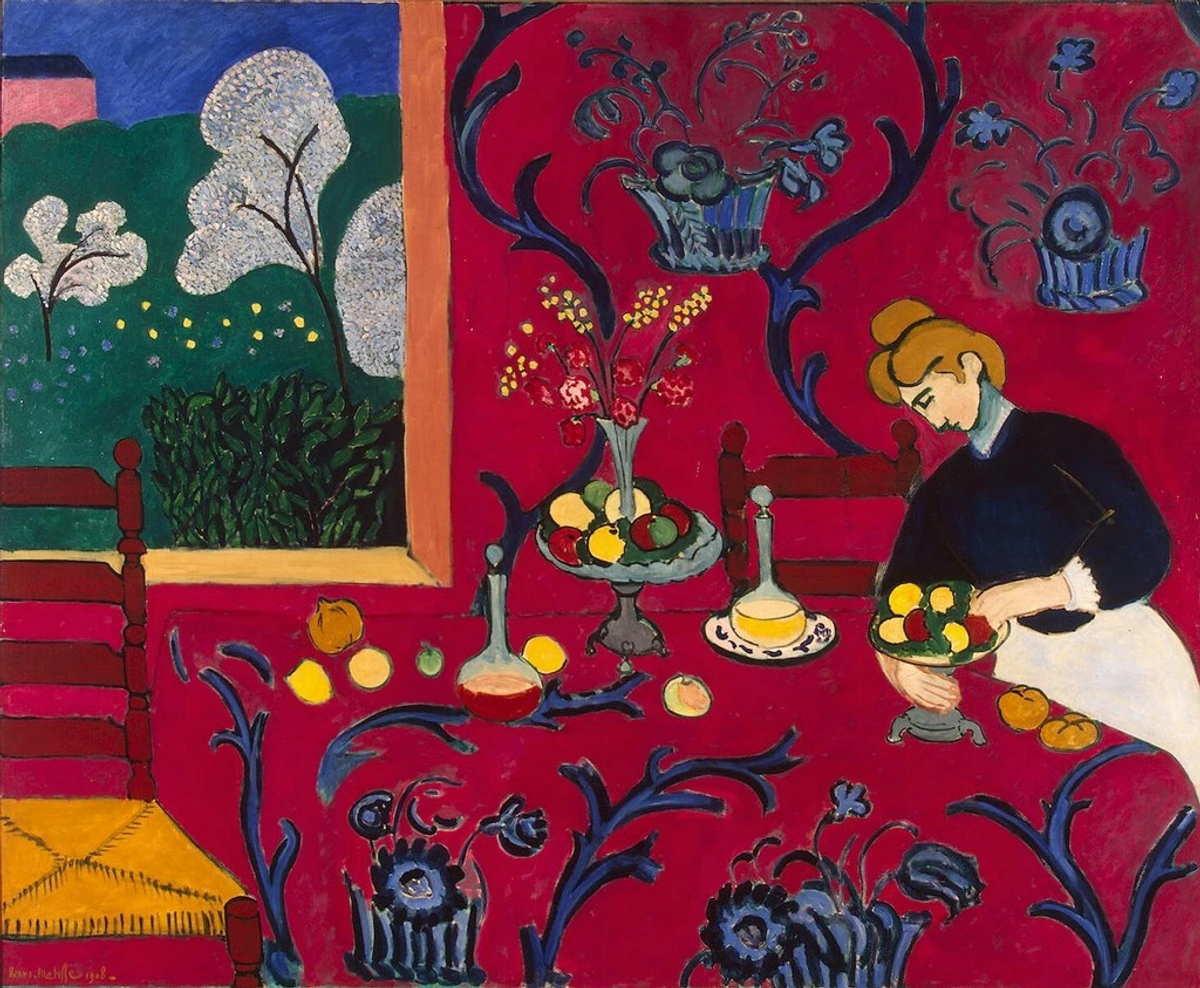
5. Displaying Your Dialogue: Placement, Lighting, and Flow
When it comes to displaying your collection, think holistically about placement, scale, proportion, lighting, and how each piece harmonizes with its neighbors. A well-lit piece can dramatically transform a corner, while a poorly placed one can get completely lost. Don't shy away from grouping pieces in unexpected ways or creating a dynamic gallery wall. Consider how art impacts different room functions—a calming piece for a home office, a vibrant one for a home gym.
Your home isn't just a container for your art; it's an active participant in the collection, a canvas that subtly dictates what will truly sing and what will merely exist within its walls. Each room possesses its own unique vibe, its natural light, its specific purpose, and architectural nuances. A vibrant, high-energy piece that feels exhilarating in your home gym might feel overwhelming in a quiet reading nook designed for contemplation. This isn't about rigid rules; it's about thoughtful mindfulness—taking a moment to visualize how a piece will truly feel in a space, and how it will be perceived from different vantage points, whether you're standing in a hallway or relaxing on a sofa. I remember moving a vibrant piece from my bustling living room to a quiet hallway, and it was as if it exhaled, finding a new, serene energy in the quieter light—a perfect example of art truly coming alive in the right context.
Consider the existing decor—the colors, the textures, the overall architectural style, the amount of natural light the room receives, and even the available wall space. Crucially, think about the scale and proportion of the artwork relative to your furniture and the room's overall dimensions. A small piece can feel utterly lost on a vast wall, while an oversized piece can overpower a delicate setting. How will a new piece interact with what’s already there? Will it create a bold, energizing contrast, or a harmonious, calming blend? It’s always a dialogue, never a monologue. And sometimes, this conversation turns into a delightfully messy negotiation between your intuition and practical considerations, but that's truly part of the fun. The concept of negative space around a piece is often as important as the art itself—allowing breathing room can make an artwork pop rather than being swallowed by clutter. Think of it like the silence between musical notes: it allows the sound to resonate, making the artwork truly sing.
Don't be afraid to experiment, to move pieces around. I’ve often found that a piece I thought was perfect for one room actually comes vibrantly alive in another, surprising me entirely. Remember, art should enhance, not compete with, the overall atmosphere you want to create. It's all about flow, especially in open-concept spaces or when trying to maximize impact in small apartments.
When hanging art, consider these practical tips:
- Wall Anchors: Always use wall anchors for heavier pieces, especially in drywall, to ensure stability and safety.
- Two Hooks for Stability: For larger frames, using two hooks (spaced appropriately) ensures they hang level and prevents tilting.
- Eye Level Rule: Aim for the center of the artwork to be at eye level (typically 57-60 inches from the floor) in rooms where people primarily stand, or slightly lower in rooms where they mostly sit.
- Adequate Spacing: Leave sufficient space between artworks, or between an artwork and furniture, to prevent visual clutter and allow each piece to breathe and be appreciated individually.
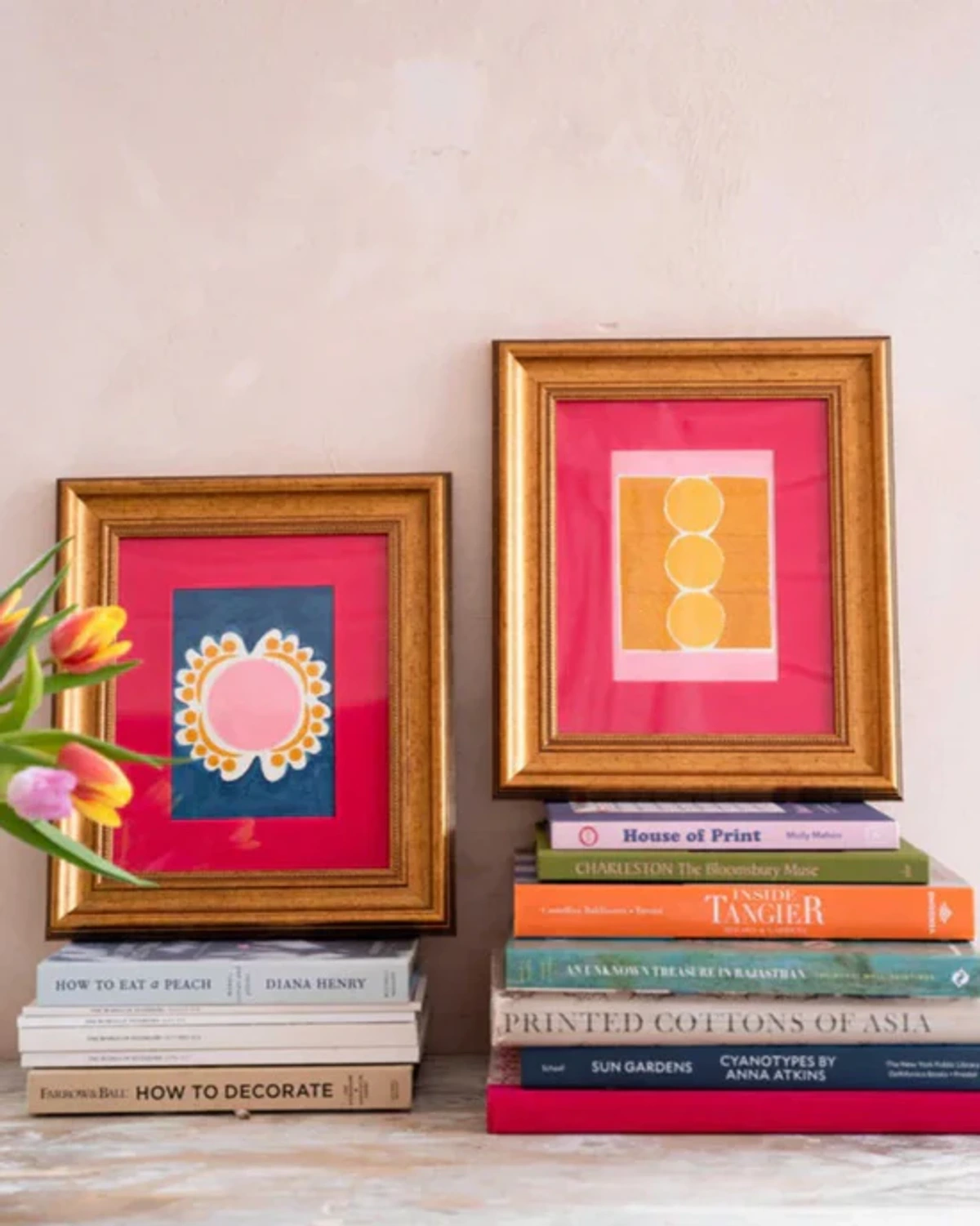
6. Art for Different Rooms: Tailoring Your Visual Story
Just as each piece of art holds its own story, so too does each room in your home. Applying the principles of personal curation to specific contexts can truly transform a house into an integrated gallery. The art you choose can subtly (or not so subtly) underscore the purpose and feeling of a space. This table offers a guide to harmonizing art with function and mood:
Room | Purpose & Vibe | Suggested Art Characteristics | Illustrative Example | Potential Challenges/Considerations |
|---|---|---|---|---|
| Entryway | Welcoming, first impression | Bold colors, intriguing abstracts, vibrant energy, conversation starter | A large, energetic abstract painting with warm reds and oranges to immediately lift spirits and spark curiosity, perhaps with dynamic lines that draw the eye inwards. | High traffic area, varied natural light, needs durability. Consider a robust frame and placement out of direct path. |
| Living Room | Conversation, relaxation, focal | Playful abstracts, contemplative landscapes, pieces sparking dialogue | A series of three minimalist geometric prints in earthy tones that encourage shared reflection without overwhelming the space, inviting calm discussion. | Accommodating multiple focal points, diverse lighting. Balance comfort and aesthetic without overwhelming the eye. |
| Dining Room | Connection, stimulating appetite | Warm colors, dynamic geometric pieces, abstract forms that energize without distraction | A large, dynamic geometric piece with a mix of bold blues and earthy ochres that stimulates conversation. | Proximity to food/drinks (splatter risk), encouraging conversation without visual clutter. Ensure easy-to-clean surfaces. |
| Home Office | Productivity, focus, inspiration | Calming yet inspiring abstracts, harmonious color harmonies, subtle textures | A serene blue-and-green abstract landscape that fosters creativity and calm amidst deadlines, allowing the mind to wander constructively. | Avoiding glare from screens, maintaining focus versus creating distraction. Reflect personal brand. |
| Bedroom | Sanctuary, rest, tranquility | Calming, serene pieces, soft palettes, dreamlike imagery, gentle textures | A soft, ethereal watercolor in muted blues and grays, evoking a sense of peaceful escape and promoting restful sleep. | Avoiding overstimulation, considering art's placement relative to the bed, managing natural and artificial light to maintain serenity. |
| Bathroom | Spa-like retreat, functional | Water-resistant prints, small sculptures, natural themes, abstract designs evoking calm | A set of three small abstract prints featuring calming ocean-inspired hues, sealed for humidity, bringing a touch of nature indoors. | High humidity, limited wall space, durability of materials, risk of water damage. Frame with conservation glass. |
| Family Spaces | Playful, educational, engaging | Durable, colorful, whimsical art, pieces that tell stories, encourage creativity and imagination | Bright, engaging abstract compositions or whimsical illustrations that spark imagination without being childish, perhaps featuring vibrant primary colors. | Durability, safety for children, accommodating evolving tastes, finding common ground for diverse family members. |
| Guest Room/Powder Room | Welcoming, intriguing, low-maintenance | Small, elegant prints; whimsical or unique pieces; themes that spark curiosity without being overly personal | A pair of framed botanical illustrations or a small, intriguing abstract print that offers a pleasant surprise and subtle elegance. | General appeal, avoiding overly personal themes, maximizing impact in smaller spaces with deliberate choices. |
| Hallway/Staircase | Transitional, visual interest, narrative flow | Series of smaller works, linear narratives, eye-catching focal points to draw attention | A curated series of black and white photographs or small, colorful abstracts creating a cohesive flow along the wall, inviting movement and telling a visual story as you pass through. | Limited width, varying sightlines, ensuring safe passage, dealing with different light levels and potential shadows. |
The key is to thoughtfully match the art's emotional resonance and visual energy with the room's function, ensuring your home tells a cohesive visual story from room to room, and often, becoming a delightful conversation starter for you and your guests.
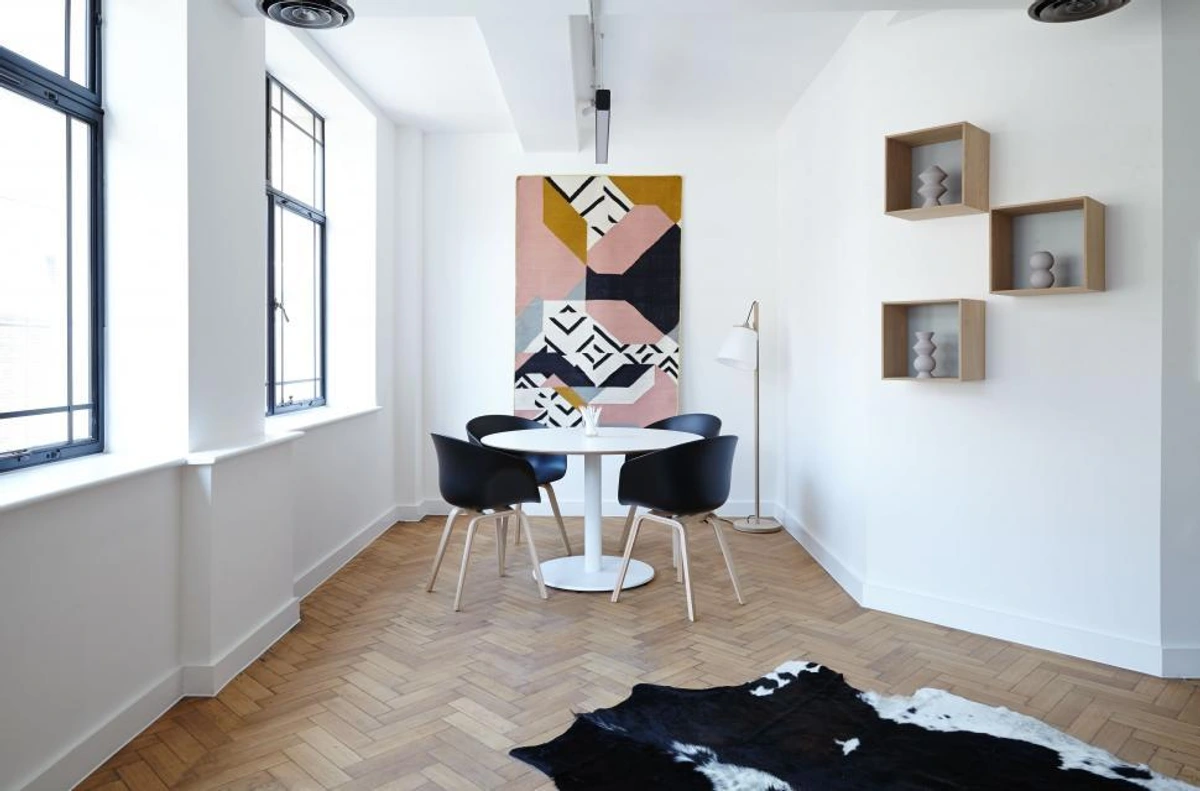
Nurturing Your Collection: Long-Term Care & Legacy
Once you’ve carefully selected and beautifully displayed your art, a little knowledge about long-term care goes a long way in preserving its beauty and, potentially, its value. Different mediums have unique needs, but generally, always avoid direct sunlight, extreme temperature fluctuations, and high humidity, which can cause irreparable damage. Why, you ask? Direct UV light from the sun can cause pigments to fade irreversibly and paper to become brittle, while drastic temperature and humidity shifts can lead to warping, cracking, or even mold growth on delicate materials. And speaking of light, consider proper lighting for your artwork—avoiding direct UV light is paramount to prevent fading, and using appropriate light temperatures (like soft LED spotlights) can dramatically enhance the colors and textures, bringing your art to life without causing harm. Gently dust framed pieces regularly with a soft cloth. For prints, handle them only by the edges to avoid fingerprints and consider archival storage if they're not framed, using acid-free folders and boxes.
1. Art Conservation and Preservation
For sculptures, always follow the artist's specific care instructions. Beyond general care, understanding the unique threats to different mediums is crucial. Paper-based works (prints, drawings) are highly susceptible to acid degradation, which causes yellowing and brittleness, while textiles can be damaged by pests and light. Metal sculptures may oxidize or corrode in humid environments, and certain pigments in paintings can fade or crack over time. For more valuable pieces or delicate mediums, don't hesitate to seek professional art conservation advice—think of it as a specialized spa day for your artwork! Conservators can halt deterioration, repair damage, and advise on optimal environmental controls, helping to preserve both the aesthetic beauty and the financial value of your collection. You might also consider art insurance for higher-value pieces to protect your investment and provide invaluable peace of mind against unforeseen events like damage or theft. Factors like the artwork's value, location, and your existing home insurance policy can influence coverage and cost, making it wise to consult with a specialist fine art insurer. For estate planning or insurance purposes, a professional art appraisal can accurately assess your collection's current market worth. And don't forget the importance of documenting the artist's signature and any artist's notes or inscriptions on the back of the artwork; these details significantly contribute to the piece's provenance and value.
2. Overcoming Art Fatigue & Sustaining Joy
And if you ever find yourself experiencing a bit of art fatigue with a particular piece—that subtle feeling where you've looked at it so long you barely see it anymore—don't be afraid to rotate it out, or even move it to a different room. Sometimes, a fresh perspective or a new environment is all that's needed to rekindle the joy and appreciation. I've certainly had pieces I adored that, after a few years, just faded into the background. Moving them, or even temporarily storing them, brought them back to life. Try researching the artist's background more deeply, or visit a similar piece in a museum or gallery to gain a fresh context. Temporarily storing a piece can also create anticipation for its return, allowing you to rediscover its magic with fresh eyes.

3. Creating a Lasting Legacy Through Art
Beyond the daily joy and personal expression, a thoughtfully curated art collection can become a profound, tangible legacy. Imagine your children or grandchildren growing up surrounded by pieces that speak of your passions, your history, and your evolving taste. Art becomes a powerful conduit for family stories, a visual heirloom that connects generations, passing down not just objects, but values, memories, and a cultivated appreciation for beauty. When considering this aspect, think about the longevity of the pieces, their historical significance (even if personal), and how they might continue to resonate with future generations. To truly solidify this, I highly recommend documenting your collection. Create a digital archive with photos, acquisition dates, detailed provenance, and most importantly, personal anecdotes about why you chose each piece and what it means to you. This is a dynamic, living history you're actively creating, ensuring your collection continues to tell its unique story for generations to come.
The Emotional Landscape of Collecting: A Journey of Discovery
Collecting art is, in so many ways, an emotional rollercoaster. There's the sheer thrill of discovery, that spine-tingling moment you stumble upon a piece that just clicks with your soul. I’ve spent hours poring over art, feeling that intense connection, much like finding a perfectly unique voice in a crowded room. It’s that exhilarating sense of recognition, of finding a piece that feels like it was always meant to be yours. And then, there’s the quiet joy of bringing it home, watching it transform a space, and discovering new details in its forms and colors with each passing day. It’s truly amazing how art can foster conversation, becoming a quiet centerpiece around which stories are shared and connections are deepened, much like how the right piece can influence your sanctuary, as we discussed earlier. Plus, the ongoing satisfaction of learning about the artists, their inspirations, and the historical context of your pieces, and knowing you're contributing to their journey, adds another rich layer to the collecting experience, transforming it into an intellectual adventure as well. This deeper engagement with art also has the profound ability to foster empathy, as you connect with the artist's perspective and the narratives embedded in the work, allowing you to see the world through different eyes. By purchasing art directly from living artists, you're not just acquiring an object; you're actively supporting their creative practice and the broader art ecosystem, becoming a vital part of their ongoing artistic journey.

Common Pitfalls and How to Embrace Them
It's easy to get caught up in common traps when building a collection, and I’ve certainly made my share of them! Buying solely for potential resale value often leads to a soulless collection that doesn't truly reflect who you are. To avoid this, try setting a clear intention upfront: is this piece for my home, for my joy, or for an investment portfolio? (It can be both, of course, but clarity helps!) Being swayed by fleeting trends can leave you with pieces that feel dated or uninspired remarkably quickly. If you're tempted by a trend, ask yourself if it resonates with your personal aesthetic, or if you just like seeing it in magazines. I was also once very drawn to a popular mass-produced canvas print of a city skyline, simply because it was everywhere. I thankfully held back, and now, years later, I'm so glad I did; it would feel so generic and impersonal in my home today. Another subtle trap is collector's envy—that feeling of inadequacy when you see someone else's seemingly perfect collection, pressuring you to acquire 'hot' artists or styles that don't truly speak to you. Remember, your collection is your story, not a competition. And sometimes, we simply don't consider the practicalities—will it truly fit? Is the lighting right? My advice? Learn from every choice. I once bought a painting I absolutely adored, only to realize it looked completely different, almost flat, under my home's lighting—a classic rookie mistake, and one that still makes me chuckle (or wince, depending on the day!). If a piece doesn't quite work, genuinely ask yourself why. Did you rush? Were you overly influenced by someone else's opinion? Did you forget to measure, or to consider the existing composition of the room? These are all valuable insights that refine your eye.
Perhaps the biggest pitfall of all is the fear of making mistakes. This fear can truly paralyze you, preventing you from starting or expanding your collection. But these experiences aren't failures; they are invaluable lessons that sharpen your collector's eye and help refine your unique voice. Your collection is a dynamic, evolving entity, much like you. Embrace the imperfections and the learning curve; they are all part of the beautiful story your home tells.
Your Home, Your Masterpiece: A Lifelong Journey
Ultimately, curating art for your home is an ongoing, deeply personal process. It's less about simply acquiring objects and more about actively building a vibrant, breathing environment that nurtures your spirit and tells your ever-unfolding story. It creates a powerful sense of "place" that is uniquely yours, a reflection of your identity. So, take a deep breath, trust your gut, and enthusiastically embark on this wonderful journey. Your home is waiting to become your most cherished gallery, filled with pieces that truly resonate, pieces that are, quite simply, you. And remember, if you're looking for pieces that spark conversation and tell a story, I invite you to explore my own collection—perhaps your next artistic dialogue awaits here.




